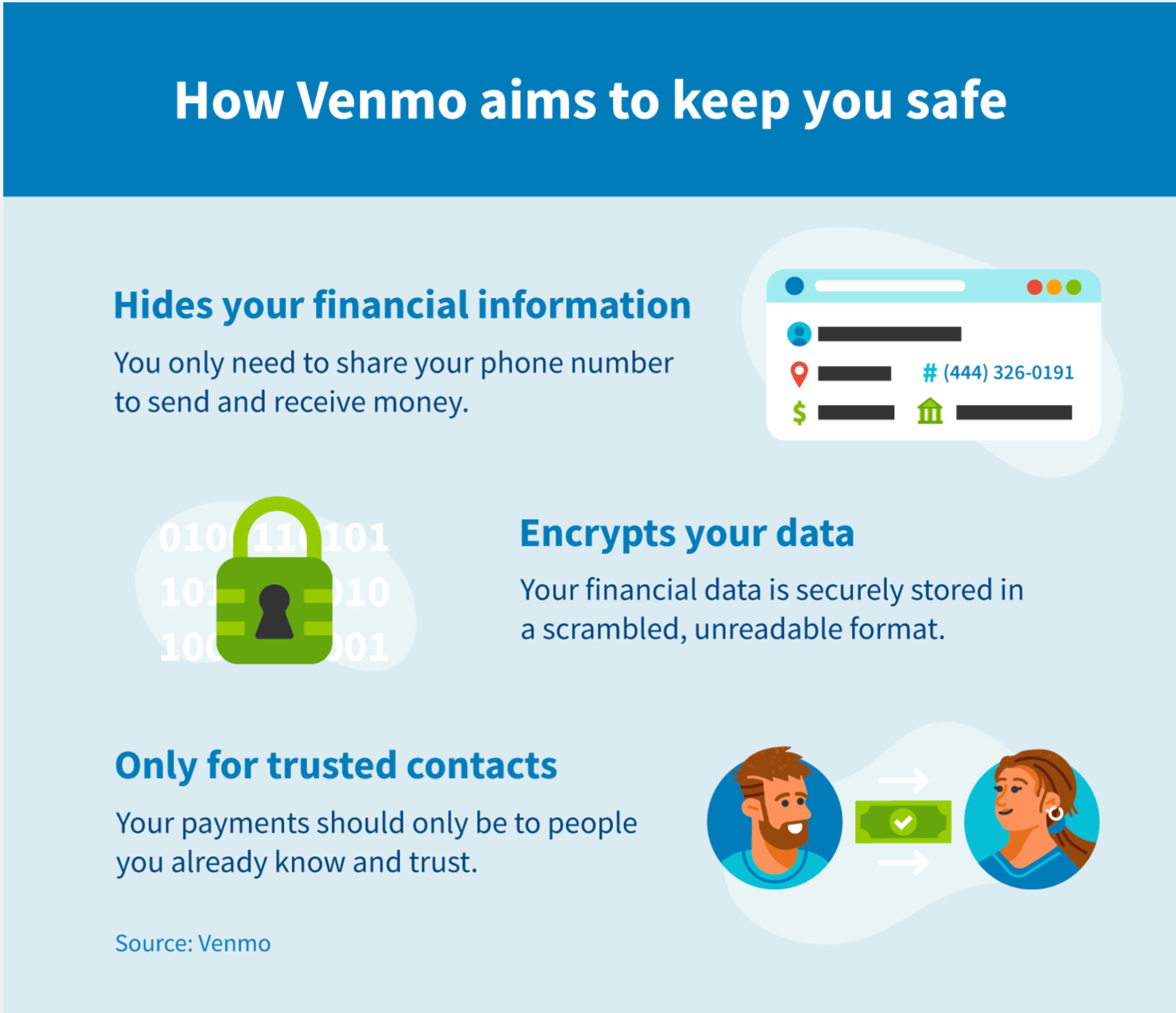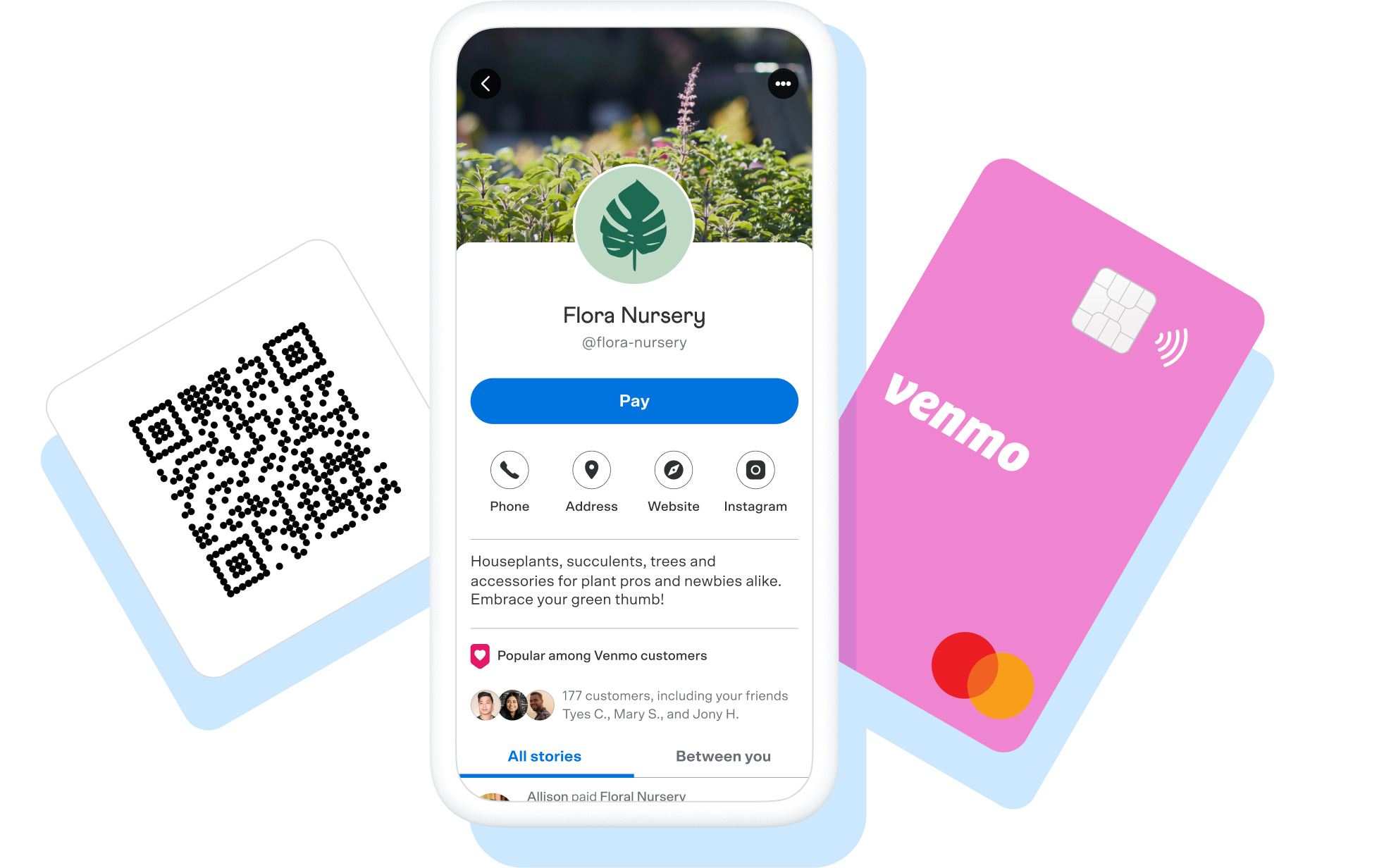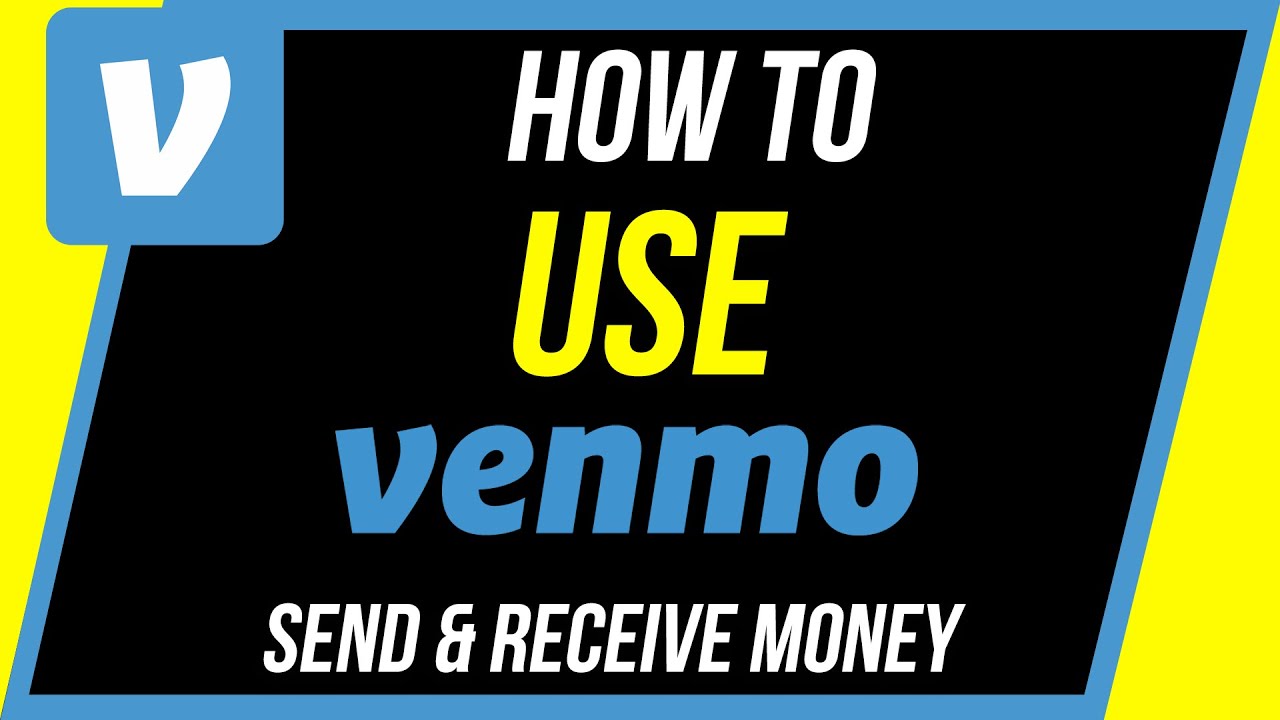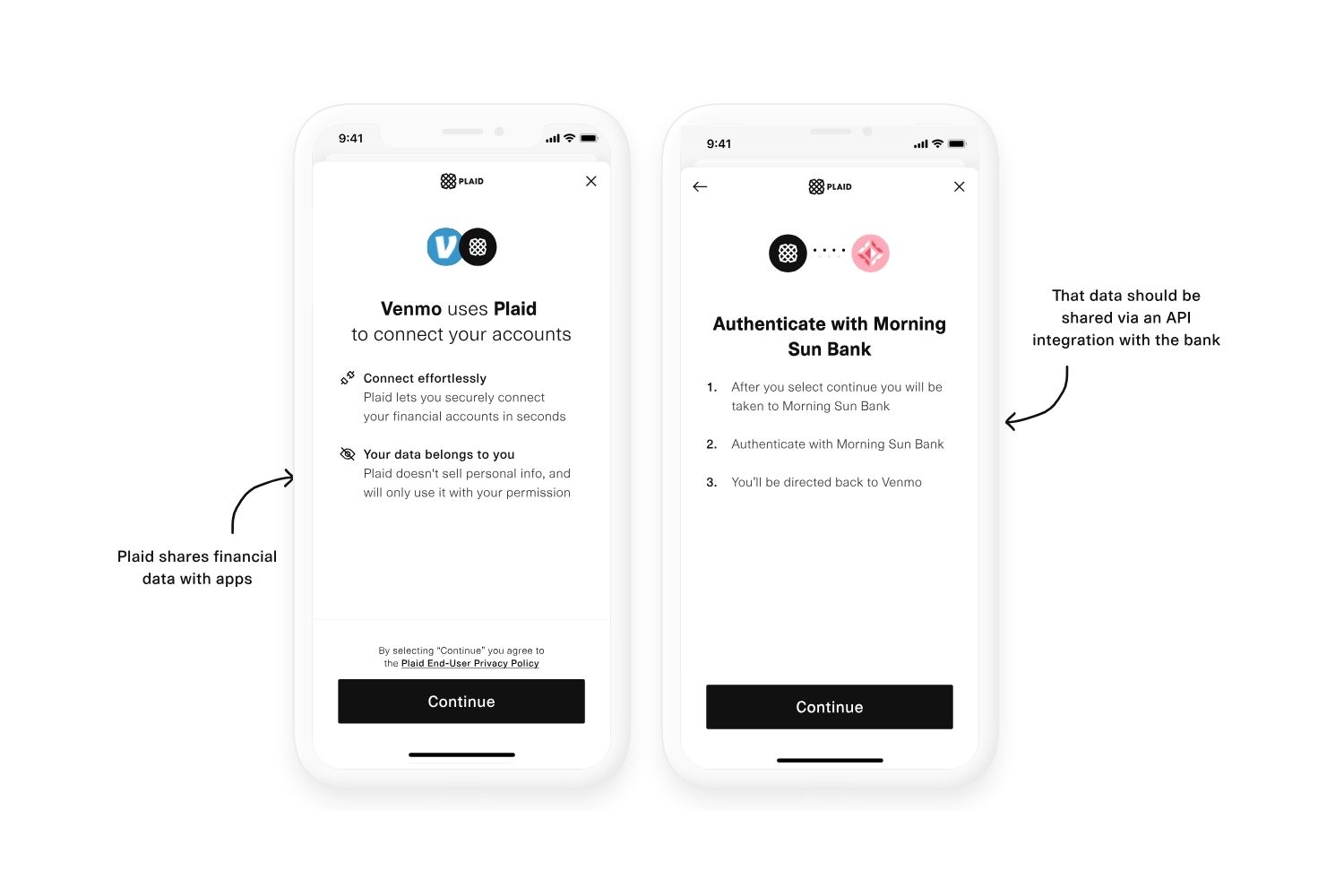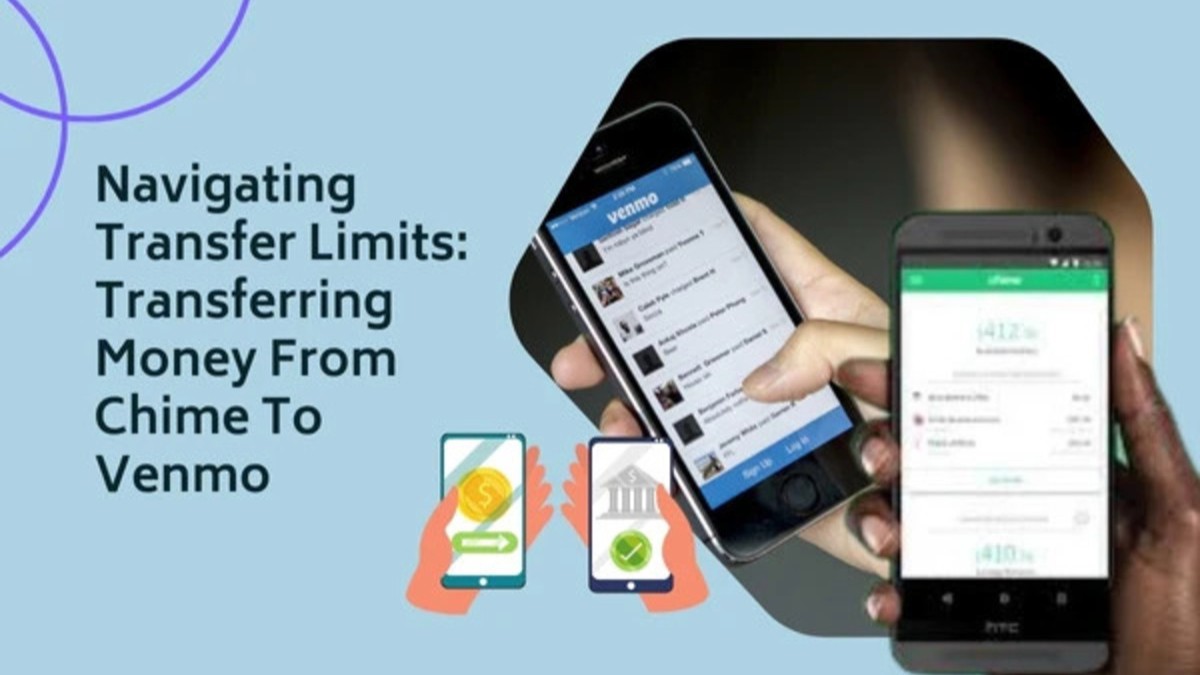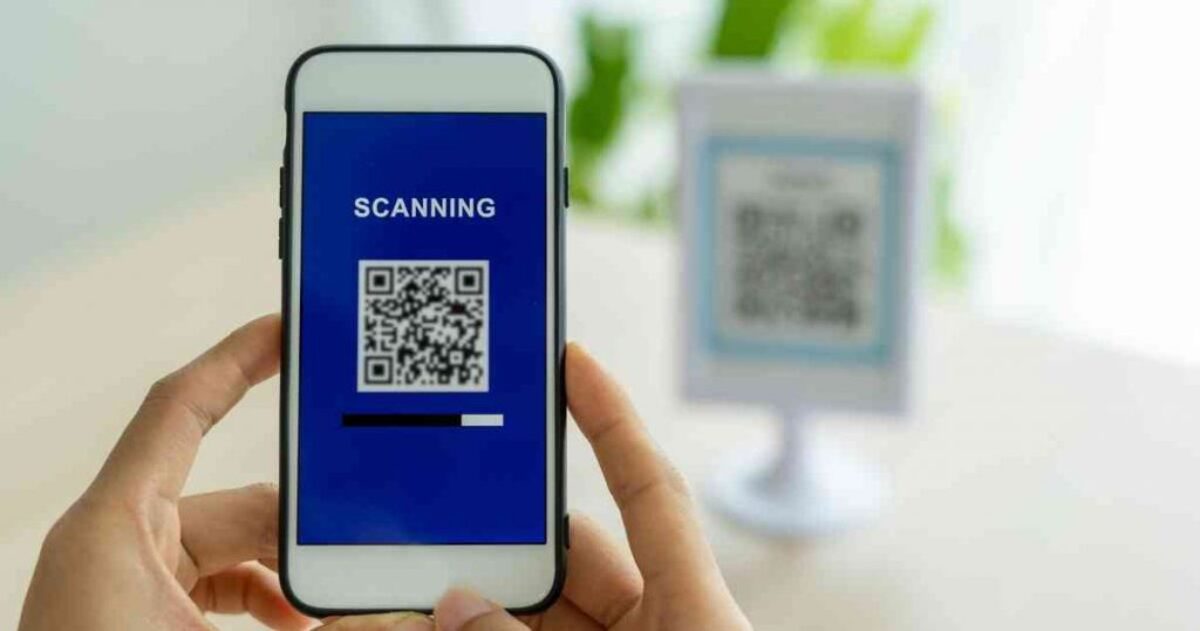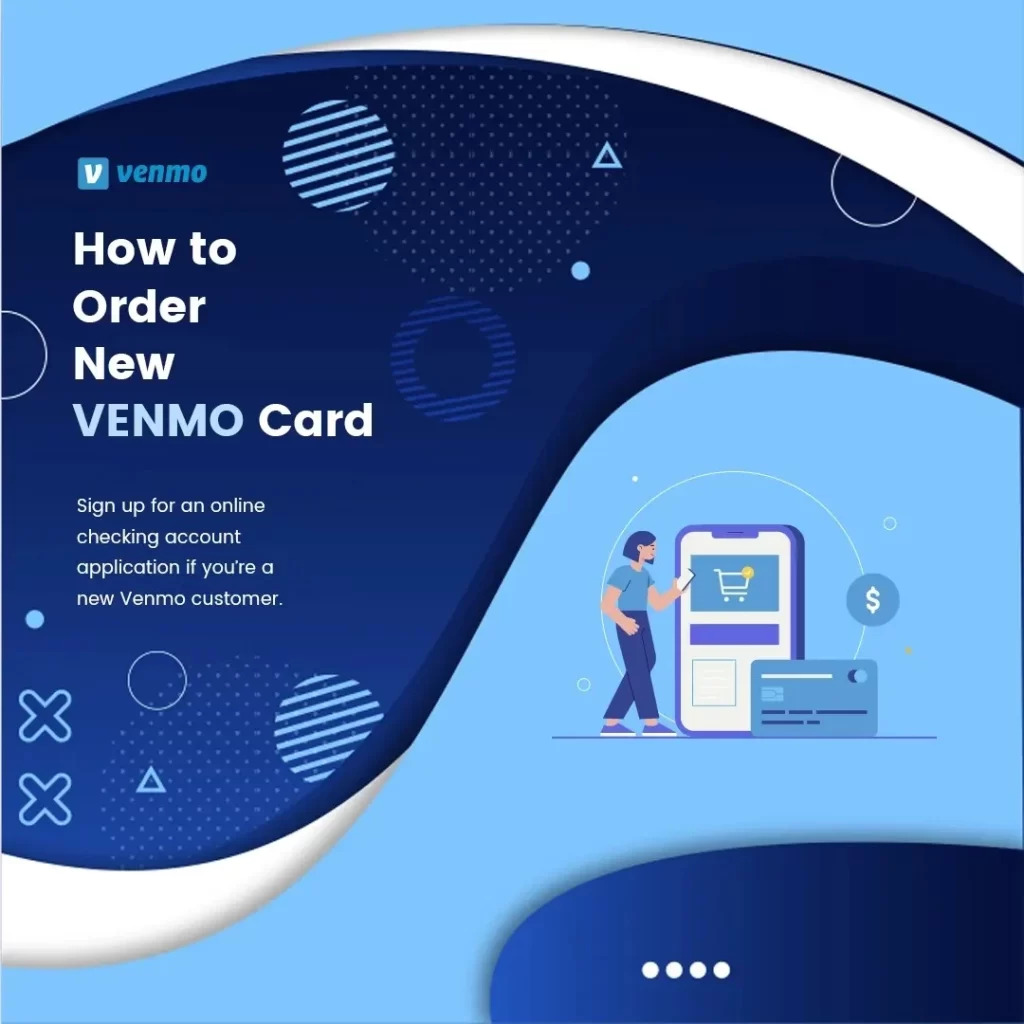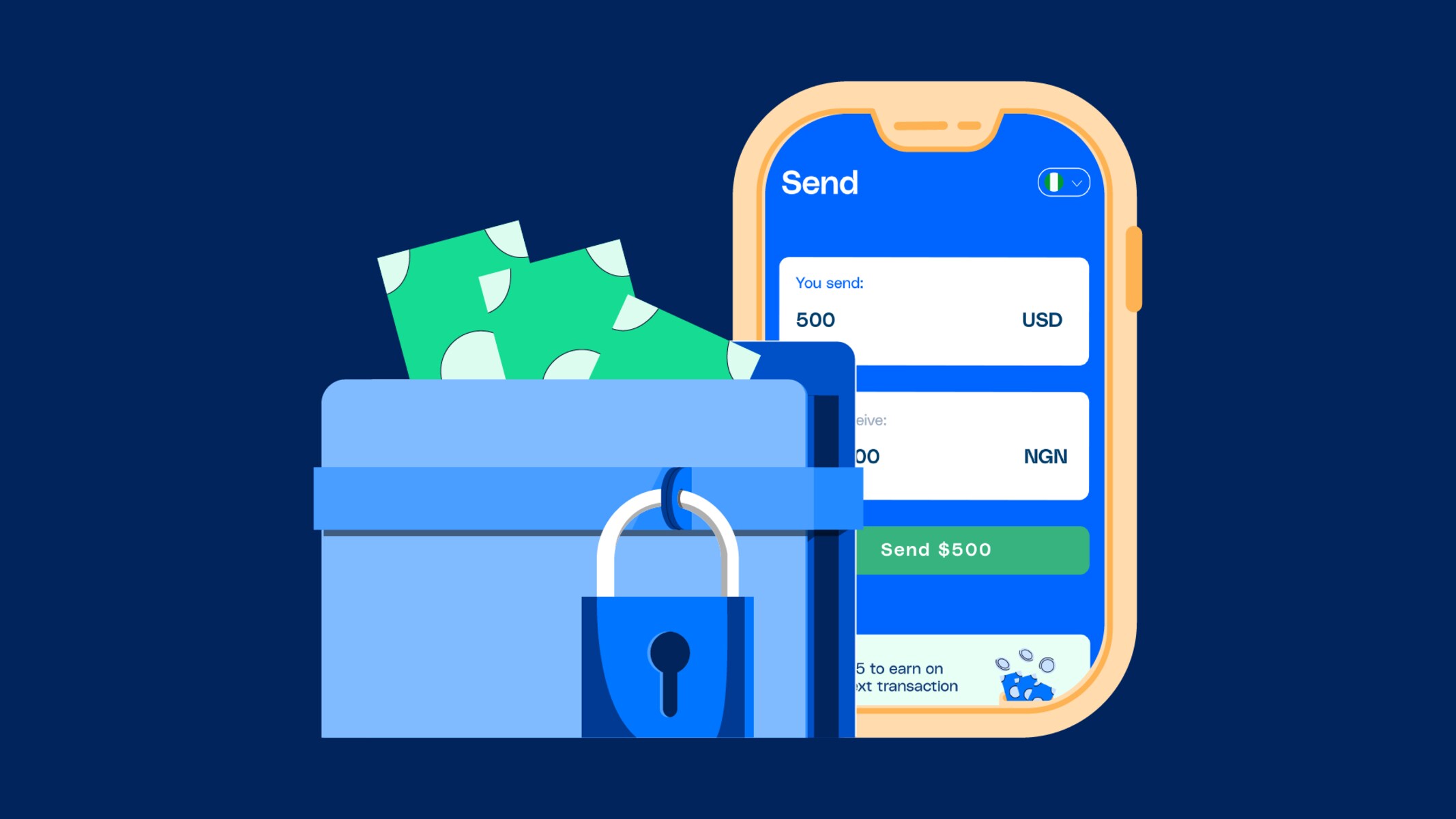What Is Venmo?
Venmo is a popular peer-to-peer mobile payment app that allows users to send and receive money effortlessly. It was founded in 2009 and acquired by PayPal in 2013, making it a trusted and secure platform for digital transactions.
With Venmo, users can easily split bills, pay friends back, and make purchases from participating merchants within the app. It has gained tremendous popularity among millennials and become a convenient way to handle everyday expenses.
One of the standout features of Venmo is its social aspect. Users can connect their Venmo accounts with their friends and share their transactions on a feed, creating a social network-like experience. This social component has contributed to the app’s viral growth and turned it into a popular way to split expenses during outings with friends.
Furthermore, Venmo allows users to link their bank accounts or credit cards to fund their transactions. This eliminates the need to carry cash or make manual bank transfers, providing a convenient and hassle-free way to handle payments.
Another notable feature of Venmo is its instant transfer capability. Once a transaction is complete, the recipient can transfer the funds to their bank account instantly instead of waiting for the usual processing time.
Overall, Venmo has revolutionized the way people make payments and share expenses. Its user-friendly interface, social aspect, and seamless money transfer capabilities have made it a go-to choice for millions of individuals.
How Does Venmo Work?
Venmo offers a straightforward and user-friendly experience for conducting digital transactions. Here’s a breakdown of how Venmo works:
- Sign up: To use Venmo, you’ll need to download the app from either the App Store or Google Play Store and create an account. You can sign up using your email address or Facebook account.
- Add a funding source: After signing up, you’ll need to link a funding source to your Venmo account. This can be your bank account or a credit/debit card. Venmo will securely store your financial information for future transactions.
- Find friends: Venmo allows you to connect with your friends by syncing your contacts or searching for friends who are already on Venmo. You can also link your Facebook account to find friends who are using the app.
- Send and receive money: To send money, you simply tap the “Pay or Request” button at the bottom of the screen. Enter the username, phone number, or email address of the recipient, specify the amount, and add a payment description. To receive money, you can either request it from a friend or wait for someone to pay you.
- Privacy controls: Venmo provides privacy options to control who can see your transactions. You can choose to make your transactions public, visible to friends, or only visible to you. It gives users the flexibility to customize their privacy settings depending on their comfort level.
- Merchant payments: Venmo also allows users to make purchases at participating merchants within the app. Simply select the desired merchant, enter the payment amount, and complete the transaction. This makes Venmo a convenient digital wallet for everyday transactions.
- Transfer funds to bank account: Once you receive money in your Venmo account, you can transfer it to your linked bank account. Venmo offers standard transfers, which are free and take 1-3 business days, or instant transfers for a small fee to get the money in your bank account immediately.
With its intuitive interface and seamless functionality, Venmo makes sending and receiving money a breeze. Whether you’re splitting bills, paying friends back, or making purchases, Venmo simplifies the payment process and provides a convenient way to manage your finances.
Is Venmo Safe?
With the rise in digital transactions, it’s natural to have concerns about the safety and security of using apps like Venmo. While no system is completely immune to vulnerabilities, Venmo has implemented several security measures to ensure the safety of its users’ transactions and personal information.
One of the primary security measures Venmo employs is encryption. All sensitive data, such as passwords and financial information, is encrypted both at rest and in transit. This means that even if someone intercepts the data, it would be extremely difficult for them to decipher or use it.
Moreover, Venmo provides users with the option to set up two-factor authentication (2FA) for added security. By enabling 2FA, users are required to enter a unique verification code in addition to their password when logging into their Venmo account. This extra layer of protection helps prevent unauthorized access to accounts.
Additionally, Venmo has a dedicated team responsible for monitoring and preventing fraudulent activities. They use advanced algorithms and machine learning to detect suspicious transactions and behavior patterns. If any suspicious activity is identified, Venmo takes immediate action to investigate and resolve the issue.
Venmo also offers robust buyer and seller protection, similar to PayPal. If you’re purchasing goods or services and encounter any issues, such as non-delivery or misrepresentation, Venmo provides dispute resolution options and may refund your money if the situation warrants it. This adds an extra level of assurance when making transactions through the platform.
It’s worth noting that no system is foolproof, and users also have a responsibility to ensure their own safety. It’s important to secure your Venmo account by setting a strong password, enabling 2FA, and keeping your mobile device and apps up to date with the latest security patches.
Overall, while no digital payment platform can guarantee 100% safety, Venmo has implemented various security measures to protect users’ transactions and personal information. By following best practices and being cautious, Venmo can be a safe and convenient way to conduct digital transactions.
Security Measures in Venmo
Venmo prioritizes the security of its users’ accounts and transactions by implementing a range of security measures. These measures work together to provide a safe and secure environment for users to send and receive money. Here are some of the key security measures employed by Venmo:
- Encryption: Venmo uses industry-standard encryption to protect sensitive data. This means that all information transmitted between users’ devices and Venmo’s servers is encrypted, making it extremely difficult for unauthorized individuals to access or intercept the data.
- Two-Factor Authentication (2FA): Users have the option to enable 2FA for their Venmo accounts. This adds an extra layer of security by requiring users to enter a unique verification code, in addition to their password, when logging in. Even if someone manages to obtain a user’s password, they would still need the additional verification code to access the account.
- Fraud Monitoring: Venmo has a dedicated team responsible for monitoring and identifying suspicious activities on the platform. They use advanced algorithms and machine learning to detect patterns that may indicate fraudulent behavior, such as unauthorized access or unusual transaction activity. If any suspicious activity is detected, Venmo takes prompt action to investigate and protect the user’s account.
- Security Notifications: Venmo provides users with real-time notifications via email, SMS, or push notifications for various account activities. These notifications include login attempts from new devices or browsers, changes to account information, and transaction alerts. Users can quickly identify and report any unauthorized account access or fraudulent transactions.
- Device Authorization: Venmo allows users to authorize specific devices that they regularly use to access their accounts. This added layer of security ensures that only trusted devices can access the account, minimizing the risk of unauthorized access from unknown or compromised devices.
- Established User Trust: As a subsidiary of PayPal, Venmo leverages the extensive security expertise and infrastructure of its parent company. PayPal is renowned for its strong security measures, strict compliance with industry regulations, and a proven track record of protecting user information.
It’s important to note that while Venmo employs these security measures, users must also take responsibility for their own account security. This includes setting strong and unique passwords, regularly updating devices and software, and being cautious of phishing attempts or suspicious links.
By proactively implementing these security measures and encouraging users to take necessary precautions, Venmo strives to provide a secure environment for its users to transact and share money seamlessly.
Venmo Privacy Options
Venmo understands the importance of user privacy and provides several privacy options to give users control over who can view their transactions and personal information. These privacy settings allow users to customize their Venmo experience based on their comfort level. Here are some of the key privacy options offered by Venmo:
- Public Transactions: By default, Venmo transactions are set to “public” visibility. This means that anyone on Venmo can see your transaction history, including the recipient’s username, the payment amount, and the payment description. However, users have the option to modify the visibility of individual transactions and make them visible only to friends or private to themselves.
- Friends-only Transactions: Venmo allows users to limit their transaction visibility to “friends” only. By selecting this option, transactions will only be visible to users who are connected as friends on Venmo. This provides an additional layer of privacy and restricts transaction visibility to a more trusted circle.
- Private Transactions: For utmost privacy, users can choose to make their transactions completely private. When a transaction is set to “private,” it is only visible to the sender and the recipient. Other users, including friends, will not be able to see the details of the transaction in their feed or search for it.
- Profile Privacy: Venmo also offers privacy options for user profiles. Users can choose to make their profiles public, visible to friends, or private. Making a profile private restricts its visibility to only the user and their approved friends, keeping personal information and transaction history more confidential.
- Block Users: In addition to privacy settings, Venmo allows users to block specific individuals. If a user experiences unwelcome interactions or wants to prevent certain users from seeing their transactions or profile, they can easily block them. Blocked users will not be able to search for or view the user’s transactions, profile, or public feed.
It’s important for users to review and understand their privacy settings to ensure they align with their desired level of privacy. Venmo provides these options to empower users and give them control over who sees their transactions and personal information.
However, it’s worth noting that while privacy settings can help protect your information, no system is completely foolproof. It’s advisable to exercise caution when sharing sensitive information and only transact with trusted individuals on Venmo.
By offering comprehensive privacy options, Venmo aims to provide a secure and customizable platform where users can confidently send and receive money while maintaining their desired level of privacy.
Venmo Scams to Be Aware Of
While Venmo is a widely used and secure platform, it’s important to be aware of potential scams that can target users. Being informed about these scams can help you stay vigilant and protect yourself while using Venmo. Here are some common Venmo scams to be aware of:
- Payment Reversal Scams: In this scam, a dishonest user will send you money on Venmo and then quickly request a reversal of the payment through their bank or credit card company. If the reversal is successful, you’ll lose both the money and the item or service you provided.
- Phishing Scams: Phishing scams involve sending deceptive emails or messages that appear to be from Venmo. These messages will usually ask you to click on a link and provide your account login credentials or personal information. To protect yourself, always ensure you’re on the official Venmo website or app before entering any sensitive information.
- Impersonation Scams: Scammers may create fake Venmo accounts that closely resemble official accounts. They will then try to trick users into sending them money by pretending to be someone else, such as a friend or a trusted individual. Double-check the account details and contact the person through a separate channel to confirm their identity before sending any money.
- Protective Payment Scams: This scam involves the scammer convincing the victim that they are making a “protective payment” through Venmo. They claim that the payment is required to verify the victim’s account or protect them from fraud. Venmo doesn’t require protective payments, so be wary of any such requests.
- Overpayment Scams: Scammers may send a larger payment than the agreed-upon amount for a transaction and ask you to refund the excess amount. However, the initial payment they sent is usually fraudulent, and once you refund the excess, it can’t be reversed, leaving you at a loss.
It’s important to stay cautious and follow safety practices when using Venmo. Here are some tips to protect yourself from scams:
- Verify the identity of the person you’re transacting with, especially if it’s an unfamiliar account or a large transaction.
- Never share your Venmo account details, including your password or unique verification code, with anyone.
- Enable two-factor authentication (2FA) for added security.
- Avoid clicking on suspicious links or opening attachments from unknown sources.
- Regularly monitor your Venmo account for any unauthorized transactions or suspicious activity.
By staying informed about common scams and adopting cautious practices, you can minimize the risk of falling victim to fraudulent activities while using Venmo.
Tips for Using Venmo Safely
Whether you’re a regular user or new to Venmo, it’s crucial to prioritize safety and protect yourself while using the platform. By following these tips, you can use Venmo confidently and securely:
- Set a strong and unique password: Use a combination of uppercase and lowercase letters, numbers, and symbols when creating your Venmo password. Avoid using easily guessable passwords and update them regularly.
- Enable two-factor authentication (2FA): Turn on 2FA in your Venmo account settings. This adds an extra layer of security by requiring a unique verification code in addition to your password when logging in.
- Verify the recipient’s identity: Before sending money to someone, ensure you are transacting with the correct person. Double-check the user’s details, such as username or phone number, to avoid sending funds to the wrong account.
- Use privacy settings wisely: Adjust your transaction visibility settings to your desired level of privacy. Be mindful of who can see your transactions and personal information, and consider setting transactions to private or friends-only for added privacy.
- Avoid public Wi-Fi for sensitive transactions: When conducting financial transactions on Venmo, use a secure and private network, such as your cellular data or trusted home Wi-Fi, to minimize the risk of your information being intercepted by malicious individuals on public networks.
- Be cautious with public transactions: If you choose to make a transaction public, be mindful of the information you share in the payment description. Avoid including sensitive details that could compromise your security or invite potential scammers.
- Regularly review your account activity: Take the time to review your Venmo account activity frequently. Check for any unauthorized transactions or suspicious activity, and report any concerns to Venmo immediately.
- Be wary of unknown or suspicious requests: If a request for payment seems unusual or unexpected, exercise caution. Avoid sending money to unfamiliar accounts or individuals you haven’t verified beforehand.
- Keep your Venmo app up to date: Regularly update your Venmo app to ensure you have the latest security patches and features. This will help protect against any known vulnerabilities and ensure a more secure experience.
- Report any issues: If you encounter any suspicious activity or believe you’ve become a victim of a scam on Venmo, report it to Venmo’s customer support immediately. They can investigate the issue and take appropriate action to secure your account.
By implementing these safety tips and staying vigilant, you can use Venmo confidently and minimize the risk of falling victim to fraudulent activities or compromising your personal information.
Venmo vs. Other Payment Apps: Which Is Safer?
When it comes to choosing a payment app, safety is a top priority for users. While there are several payment apps available, each with its own security features, it’s important to evaluate their safety measures before making a decision. Let’s compare Venmo to other popular payment apps to determine which is safer:
Venmo: Venmo offers robust security measures to protect user accounts and transactions. It utilizes encryption to safeguard sensitive data and allows users to enable two-factor authentication (2FA) for added security. Venmo also has a dedicated team monitoring suspicious activity and offers buyer and seller protection. Additionally, Venmo’s association with PayPal, a trusted and established payment platform, adds an extra layer of confidence in its security practices.
Zelle: Zelle is a payment app that allows users to send money directly from their bank accounts. It offers multi-factor authentication and employs encryption for secure transactions. However, it’s important to note that Zelle’s security features rely heavily on the security measures implemented by the user’s financial institution.
Cash App: Cash App provides security features like fingerprint or PIN authentication and encrypts data during transactions. It also monitors user accounts for potentially fraudulent activities. However, Cash App has seen some reports of scams and unauthorized transactions. Users should remain cautious and always verify the recipient’s information before sending money.
Google Pay: Google Pay uses multiple layers of security, including data encryption and tokenization, to protect user data. It also offers fingerprint or PIN authentication and allows users to remotely lock their Google Pay account if their device is lost or stolen. However, users should still practice general online safety precautions and protect their devices with passwords or biometric features.
Apple Pay: Apple Pay uses a secure element chip and tokenization to protect user payment information. It requires biometric authentication, such as Touch ID or Face ID, to authorize transactions. Additionally, Apple Pay does not store transaction details, adding an extra level of privacy. However, users should still be cautious when linking their bank accounts or credit cards and ensure they are using a secure Apple device with the latest operating system updates.
In summary, while all the payment apps mentioned have implemented security features to protect user data, Venmo stands out with its robust encryption, 2FA, fraud monitoring, and buyer and seller protection. Its association with PayPal adds an additional level of trust. However, it’s important to note that no payment app can guarantee absolute security. Users should always exercise caution, enable necessary security measures, and verify transaction details to ensure a safe and secure experience.
Final Thoughts on Venmo’s Safety
Venmo has established itself as a convenient and popular peer-to-peer payment app, making it essential to consider its safety measures. Overall, Venmo prioritizes the security and privacy of its users through encryption, two-factor authentication (2FA), fraud monitoring, and buyer and seller protection. These security features, combined with its association with PayPal, contribute to Venmo’s overall safety.
However, it’s important to remember that no digital payment platform is entirely immune to risks, and users must also take responsibility for their own safety. Practicing good security habits, such as choosing strong passwords, enabling 2FA, and monitoring account activity, are essential when using Venmo or any other payment app.
Additionally, users should remain vigilant and educate themselves about potential scams that can affect Venmo users. Being aware of common scams, such as payment reversals, phishing attempts, or overpayment schemes, can help users identify and avoid fraudulent activities.
While Venmo continues to enhance its security measures, users must also play an active role in protecting their accounts and personal information. It is crucial to verify the identity of recipients before sending money, use secure networks when making transactions, and regularly review privacy settings to suit individual preferences.
Furthermore, it is advisable to keep the Venmo app up to date by installing the latest updates and patches. This ensures that users have access to the most recent security enhancements and fixes for any potential vulnerabilities.
Overall, Venmo offers a range of security features and privacy options, providing users with a safe and convenient way to send and receive money. By staying informed, exercising caution, and implementing best security practices, users can make the most of Venmo while maintaining their financial safety.







